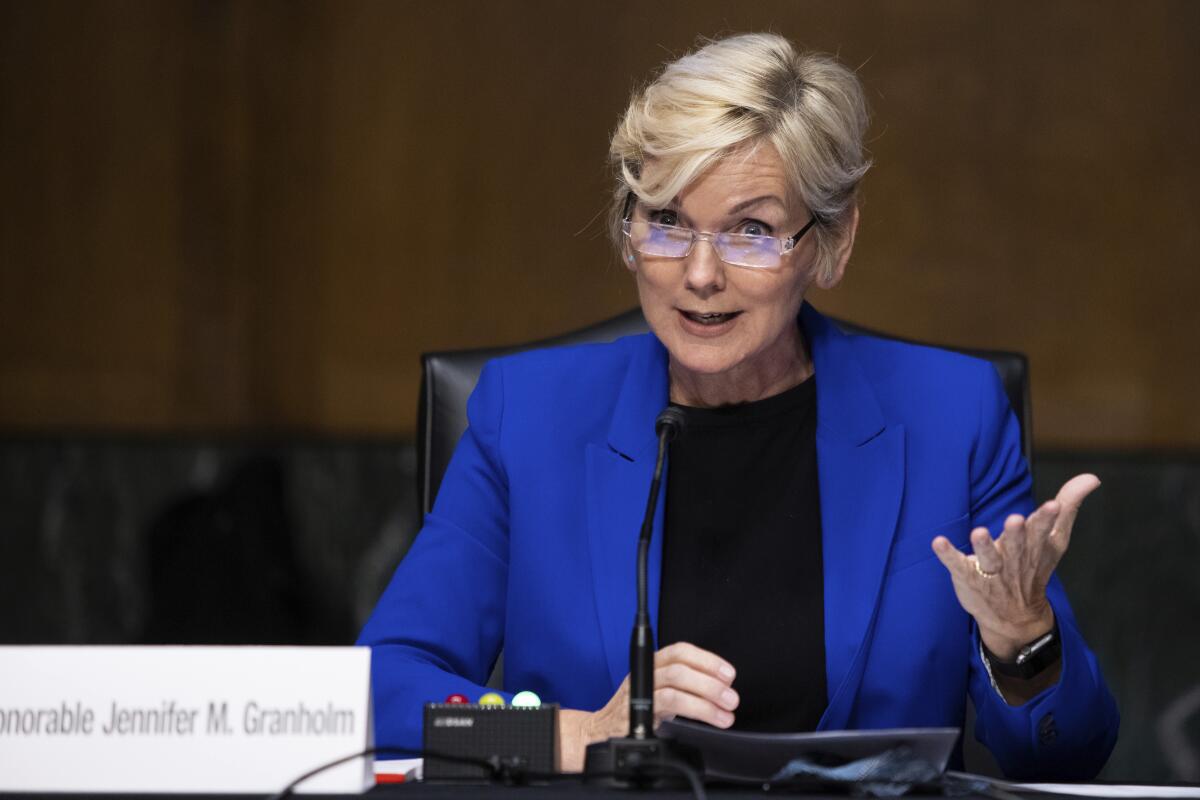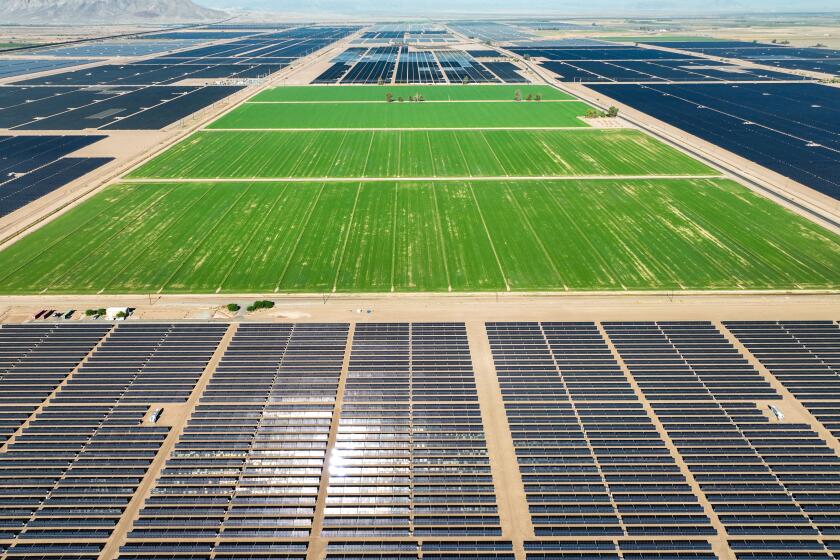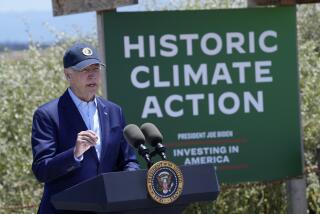Biden’s green energy bank races to deploy billions toward clean tech

An obscure arm of the U.S. Energy Department is racing against the clock to leverage as much as $394 billion to speed the country’s fight against climate change.
Mostly sidelined by the Trump administration, the agency’s Loan Programs Office has been revived under President Biden and armed with more money after the passage last year of the country’s landmark climate law. But the office’s window of opportunity to support innovative low-carbon technologies could be short, with two years left in Biden’s term and no guarantee that a future president will prioritize it.
The office announced only four conditional loans or loan guarantees in 2021 and 2022. On Friday, officials said they were offering a fifth one — a conditional $700-million loan for a lithium-mining project in Nevada that’s expected to support electric vehicles. But the office has more than 100 applications right now, so more deals — perhaps many more — may be coming, said Jigar Shah, the head of the office.
Energy Secretary Jennifer M. Granholm “opens up every meeting with how many days we’ve been in office and how many days are left,” Shah said. “I mean, it’s right in your face — you have a lot to do.”
Although the office may be little known outside of Washington and the energy industry, it’s had an outsize role in shaping the trajectory of the power and transportation sectors over the last dozen-plus years. A primary task: scaling viable clean technologies, not incubating new ones.
In 2010, the office provided a key $465-million loan to a then-struggling Tesla, at the time a boutique maker of a $109,000 sports car, and it financed the first large U.S. solar farms more than a decade ago. But the office may still be best known for one of its few failures, a $535-million loan guarantee during the Obama administration to Solyndra, a solar manufacturer that soon flopped.
Today, it’s still one of the best U.S. hopes to commercialize the clean technologies — such as advanced nuclear power and carbon capture — necessary to help meet the country’s goal of at least halving its emissions by 2030. There’s pressure to move fast, in part because of the worsening climate crisis. But the office also now faces a House of Representatives led by Republicans who have already vowed to closely monitor it.
The office has “done a really good job of building the pipeline,” said Jonathan Silver, who oversaw the program’s most active period during former President Obama’s first term. “Whether they can get this dollar amount out or that dollar amount out, I don’t know. But that’s less important than getting strong projects done.”
Replacing agriculture with solar panels could help solve the West’s energy and water crises. But farmers are fighting back.
Shah — a solar pioneer, irreverent former podcaster and onetime clean-tech investor — took over the office in 2021. At the time, it was effectively dormant following Trump administration attempts to terminate it.
An early challenge was getting companies “to recognize the doors were open for business and that people should be working with us,” Shah said. So he used his Twitter and LinkedIn megaphones, and hit the podcast and conference circuit, to drum up interest. He also had to boost hiring. Last year showed that there wasn’t just interest in its funding power, but that companies were willing to put in the effort to get loans or loan guarantees, Shah said.
Of the office’s 125 applications, about a third are capable of completing deals efficiently, he said. Another third need what he described as “intensive mentorship,” and the balance is “a little early” to be starting the process of obtaining a loan or guarantee.
The Loan Programs Office had about $44 billion available before the climate law passed, and has $394 billion in total loan authority now, according to a spokeswoman said. There are deadlines of September 2026 or 2028, depending on the type of loan sought for financing linked to the new law.
“They gave us that money because they believe that American entrepreneurs and others have gone as far as they can go, and now need our assistance to get to the rest of the way,” Shah said. “2023 is about execution.”
Bloomberg staff writers Jennifer A Dlouhy and Sophie Caronello contributed to this report.







